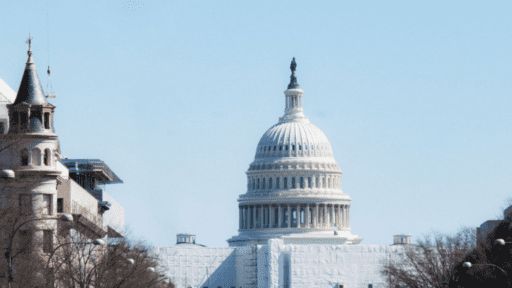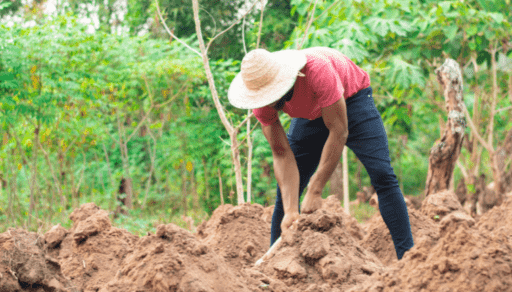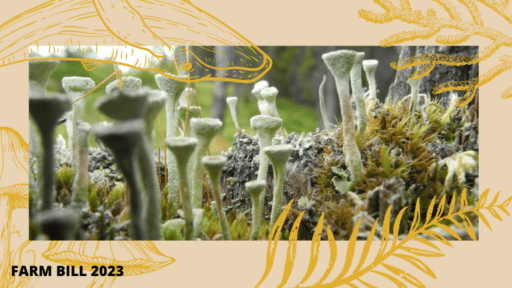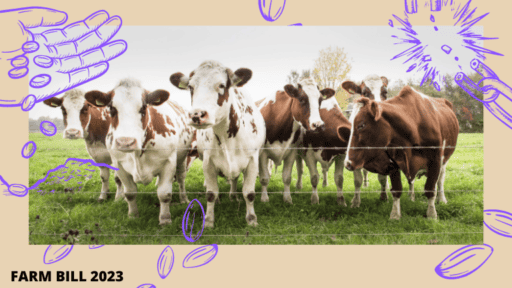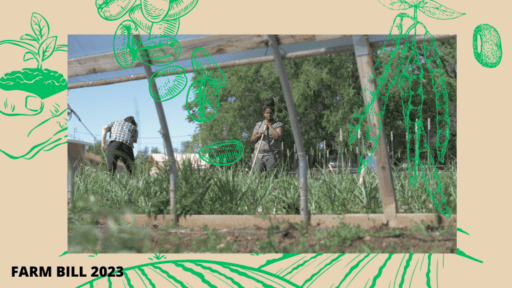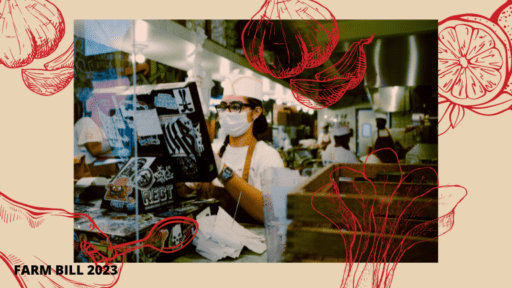The HEAL Food Alliance is calling on the 118th Congress to craft Farm Bill legislation that supports thriving
futures for all people and our planet. The documents below provide policy recommendations (endorsed by over 150 diverse organizations) from HEAL that we strongly feel Congress should be address at the federal level in the 2023 Farm Bill.
HEAL Farm bill priorities
Our Vision for the 2023 Farm Bill
2023 Full HEAL Food Alliance Farm Bill Priorities
1-Pager: Securing Dignity & Fairness for Food Chain Workers & their Families
1 Pager: Providing Opportunities for All Producers
1 Pager: Investing In Communities, Not Corporations
1 Pager: Nourishing People
1 Pager: Ensuring the Survival of Ecosystems & Our Planet
Dig Deeper!
Read the Farm Bill Backgrounders
Read: HEAL's Farm Bill Blogs
HEAL Statement on House Democratic Principles for the Next Farm Bill
February 8, 2024: On Wednesday, the House Agriculture Committee Democrats published a memo laying out the principles the next farm bill should include to win the support of the House Democratic Caucus. In response to the memo the HEAL Food Alliance issued the following statement: The HEAL (Health, Environment, Agriculture, Labor) Food Alliance is glad […]
3 months ago
Dysfunctional Congress Left American Farm Workers in Limbo
*note: This op-ed was originally published in the the Opinion section of the Messenger on October 18, 2023 Dysfunctional Congress Left American Farm Workers in Limbo By Jose Oliva and Sophie Ackoff Although Congress was able to make a deal this weekend and avoid a government shutdown, the 21.5 million people working in the food […]
3 months ago
Bills, Bills, Bills: Nine pieces of legislation that could push the Farm Bill in the right direction
As part of the farm bill process, members of Congress introduce “marker bills” to try to get provisions included into the larger bill. We do not expect Congress to pass marker bills as standalone bills – they are often not politically feasible to pass on their own. But they do get people talking and help build momentum for policies that should be included in the larger (“omnibus”) bill. Marker bills are also an opportunity for advocacy, enabling community groups and legislators to work together to address issues that impact our food system and our lives.
6 months ago
It’s time to center climate justice and real climate solutions in the Farm Bill!
Real solutions to the climate crisis already exist – on fields and farms, in communities, grassroots organizations, and in agricultural collectives.
Currently, the Farm Bill props up industrial agricultural practices and corporations that wreak havoc on our ecosystems while polluting our air, water and food, including their false climate solutions that perpetuate extraction and exploitation.
10 months ago
It’s time to address food insecurity in the Farm Bill!
Community care is ensuring every person has access to sustainable, nourishing food they can afford.
Nutrition in the US is most often decided, not by personal or individual choice, but by where you live, what you do, and what you can afford to buy. And for communities of color, food apartheid and systemic racism further limit the nutritious food we have access to.
10 months ago
It’s time to invest in communities and break up corporate power in the Farm Bill!
Corporate agribusinesses, through consolidation, have amassed massive power over food production lines, controlling each step from “farm to fork.” Before I joined the HEAL Food Alliance as an Organizer, I supported beginning farmers and livestock producers in the Midwestern “corn belt,” a region dominated by commodity farming and the base for many large corporate agribusinesses.
10 months ago
We must center BIPOC farmers & producers in the farm bill!
For many Black, Indigenous, and other people of color in the US, land and water stewardship play a central role in our culture, way of life, economic livelihoods, and the sustainability of our communities.
However, due to white settler colonialism, the opportunity to farm has been unjustly stripped from the majority of BIPOC communities in the US through many avenues, including government policies and programs.
10 months ago
It’s time to secure rights for food and farm workers in the Farm Bill!
I became enamored with the restaurant industry when I first came to the US. I was 13 years old and my parents were fleeing a bloody civil war that claimed the lives of several members of our family. Despite being a teacher in Guatemala, here in the US my mother could only find work in a restaurant.
It was only after I began working in the industry myself that I soon realized the glamor and fast-paced energy I glimpsed through the windows of my mother’s workplace was just a mirage. It was in fact the reflection of abusive managers, racism and a sexist environment unlike anything I had ever experienced.
10 months ago
Watch: Farm Bill Workshop with the San Diego Food Systems Alliance
What is the farm bill?
The farm bill is some of the most powerful federal legislation shaping the United States’ food and farm system. It impacts all of us living here, as well as communities around the world.
In a nutshell, the Farm Bill is a collection of food and agriculture laws, programs, and funding that congress passes every 5 to 7 years. It determines what food farmers grow, what consumers eat, and how we access food. Because of the central role food plays in our economy and our daily lives, the farm bill impacts our health, our jobs, our environment, and for many, even where we live.
A lot of people assume that our food and farm system operates in an open market, where farmers grow what consumers want to eat, and consumers pay for that food. In reality, the farm bill is what really pays for large portions of what we eat and how that food is grown, harvested, processed, and transported. The farm bill is funded by the federal government - aka us taxpayers. Its our bill. (The most recent farm bill cost about $428 billion).
In a nutshell, the Farm Bill is a collection of food and agriculture laws, programs, and funding that congress passes every 5 to 7 years. It determines what food farmers grow, what consumers eat, and how we access food. Because of the central role food plays in our economy and our daily lives, the farm bill impacts our health, our jobs, our environment, and for many, even where we live.
A lot of people assume that our food and farm system operates in an open market, where farmers grow what consumers want to eat, and consumers pay for that food. In reality, the farm bill is what really pays for large portions of what we eat and how that food is grown, harvested, processed, and transported. The farm bill is funded by the federal government - aka us taxpayers. Its our bill. (The most recent farm bill cost about $428 billion).
Why is the farm bill important?
Many of the programs we pay for in the farm bill help the public. For example, the Supplemental Nutrition Assistance Program (SNAP), helps working families get the food they need. However, big portions of farm bill money go to a handful of large farming corporations, known as “agribusiness” or “industrial agriculture.”
When the government helps pay for something, it is called a “subsidy” or “subsidizing.” While subsidies can be helpful to working people and their families, subsidies to corporations can be harmful to those same families. For decades, the majority of the large farming corporations that the government subsidizes have damaged the soil, water, and air that we depend on to live. They drive small farmers out of business, worsen our health, and keep food prices high. They also provide dangerous working conditions and pay very low wages to working people. As a result, many people in our society, especially Black, Indigenous, and people of color (BIPOC), rural communities, and working families suffer first and worst from damage inflicted by these few, greedy corporations.
Historically, other programs in the farm bill have also benefited large-scale white farmers, while harming Black, Indigenous, and other farmers of color. Because of the reach of the farm bill, this has had severe consequences, including many Black and Indigenous farmers losing their land.
Subsidizing agribusiness has also caused these big corporations to become bigger and bigger. The big corporations use their political and economic power to manipulate and control our food system. Today, very few powerful corporations control our food system. Fortunately, many people are working hard to ensure the farm bill benefits Black, Indigenous, and People of Color, working people, and our communities — not just a few big corporations.
When the government helps pay for something, it is called a “subsidy” or “subsidizing.” While subsidies can be helpful to working people and their families, subsidies to corporations can be harmful to those same families. For decades, the majority of the large farming corporations that the government subsidizes have damaged the soil, water, and air that we depend on to live. They drive small farmers out of business, worsen our health, and keep food prices high. They also provide dangerous working conditions and pay very low wages to working people. As a result, many people in our society, especially Black, Indigenous, and people of color (BIPOC), rural communities, and working families suffer first and worst from damage inflicted by these few, greedy corporations.
Historically, other programs in the farm bill have also benefited large-scale white farmers, while harming Black, Indigenous, and other farmers of color. Because of the reach of the farm bill, this has had severe consequences, including many Black and Indigenous farmers losing their land.
Subsidizing agribusiness has also caused these big corporations to become bigger and bigger. The big corporations use their political and economic power to manipulate and control our food system. Today, very few powerful corporations control our food system. Fortunately, many people are working hard to ensure the farm bill benefits Black, Indigenous, and People of Color, working people, and our communities — not just a few big corporations.
HOW CAN THE FARM BILL WORK FOR US?
There are many ways to make the farm bill work for us:
◉ Require food and farm jobs to be safer and fairer for working people;
◉ Provide more opportunities for Black, Indigenous, and farmers of color;
◉ Invest in communities, not corporations;
◉ Ensure everyone has access to good quality food they can afford; and
◉ Produce food in a way that is good for the environment.
◉ Provide more opportunities for Black, Indigenous, and farmers of color;
◉ Invest in communities, not corporations;
◉ Ensure everyone has access to good quality food they can afford; and
◉ Produce food in a way that is good for the environment.
For a beautiful visual explainer of the Farm Bill, check out La Semilla’s free zine on the Farm Bill, offered in both English and Spanish.
How can you help?
The next farm bill will pass in 2023 or 2024, but discussions about what it should include have already begun.
Traditionally the farm bill has been shaped by powerful players, primarily big farming corporations. A farm bill shaped by big corporations leads to a farm bill that benefits big corporations. For this next farm bill—HEAL, along with our partners—wants to lift up the needs and voices of our communities. To do so, we need to grow a movement of everyday people–including farmers, food and farm workers, teachers, healthcare workers, and consumers—to share our opinions and stories.
If you are interested in demanding a farm bill that puts people over corporations, we invite you to join us. No experience necessary!
◉ Follow us on social media: Instagram, Facebook, Twitter
◉ If you are in touch with an organization that is involved in Farm Bill advocacy, email that organization to get involved!
◉ If you'd like to get involved, email HEAL’s National Organizer Maleeka Manurasada at Maleeka (at) healfoodalliance.org
◉ If you are in touch with an organization that is involved in Farm Bill advocacy, email that organization to get involved!
◉ If you'd like to get involved, email HEAL’s National Organizer Maleeka Manurasada at Maleeka (at) healfoodalliance.org
Why does the farm bill exist?
Congress passed the first Farm Bill in 1933 under President Franklin Delano Roosevelt during the Great Depression and Dust Bowl in response to numerous crises, including:
◉ Widespread hunger,
◉ Very low prices for crops,
◉ Lack of infrastructure in rural parts of the country; and
◉ Dangerous destruction of the soil.
◉ Very low prices for crops,
◉ Lack of infrastructure in rural parts of the country; and
◉ Dangerous destruction of the soil.
The first farm bill started many large programs to try to address these problems, several of which still exist in some way today. Due to the massive amount of funding, these programs have dramatically shaped our food and farm system in the last century.
In 1933, these programs included environmental restoration, hunger relief, research, and huge economic programs. These economic programs included credit and subsidy initiatives to help farmers afford to farm.
They also included programs where the government would directly buy crops to help take the risk out of farming and to stabilize the market. The crops the government purchased were generally crops that could be stored and distributed when convenient, such as corn and wheat. These crops are called “commodity crops.”
In 1933, these programs included environmental restoration, hunger relief, research, and huge economic programs. These economic programs included credit and subsidy initiatives to help farmers afford to farm.
They also included programs where the government would directly buy crops to help take the risk out of farming and to stabilize the market. The crops the government purchased were generally crops that could be stored and distributed when convenient, such as corn and wheat. These crops are called “commodity crops.”
The farm bill and race
While many of these programs of the first farm bill helped provide relief to struggling farmers and people in general, it was also created within racist systems and laws, which made racial inequality worse. For example, the farm bill gave credit and funding to white farmers and excluded Black, Indigenous and farmers of color. This allowed more and more white farmers to buy land, and more and more Black, Indigenous, and farmers of color to lose land.
Multiple lawsuits have proven that the farm bill discriminated against Black and Indigenous farmers:
In the Pigford vs. Glickman case, the federal government recognized that it had discriminated against Black farmers in credit programs, disaster relief, and other ways. In total, more than $2 billion in claim settlements were awarded to Black farmers.
In the Keepseagle vs. Vilsack case, the federal government recognized that it had discriminated against Indigenous farmers in credit programs.
And even today, racist practices from the farm bill still cause a disadvantage for BIPOC farmers.
From the beginning, the United States farming system has been rooted in chattel slavery and colonization, including the harming, killing, and stealing from Black and Indigenous people for the benefit of white farmers. This has led to very few farms being owned by Black, Indigenous, and farmers of color. And that number continues to shrink.
For example, In 1920, the United States had about 1 million Black farmers; in 2017 there were just 45,000. In contrast, in 2017, 95% of all farm producers were white. To learn more how federal farming policies have caused racial harm, check out HEAL’s explainer.
Multiple lawsuits have proven that the farm bill discriminated against Black and Indigenous farmers:
In the Pigford vs. Glickman case, the federal government recognized that it had discriminated against Black farmers in credit programs, disaster relief, and other ways. In total, more than $2 billion in claim settlements were awarded to Black farmers.
In the Keepseagle vs. Vilsack case, the federal government recognized that it had discriminated against Indigenous farmers in credit programs.
And even today, racist practices from the farm bill still cause a disadvantage for BIPOC farmers.
From the beginning, the United States farming system has been rooted in chattel slavery and colonization, including the harming, killing, and stealing from Black and Indigenous people for the benefit of white farmers. This has led to very few farms being owned by Black, Indigenous, and farmers of color. And that number continues to shrink.
For example, In 1920, the United States had about 1 million Black farmers; in 2017 there were just 45,000. In contrast, in 2017, 95% of all farm producers were white. To learn more how federal farming policies have caused racial harm, check out HEAL’s explainer.
What does the Farm Bill look like?
The Farm Bill is a massive document. For context, the 2018 farm bill is 530 pages long, and is organized into 12 sections called “titles.”
The 2018 farm bill titles are: Commodities, Conservation, Trade, Nutrition, Credit, Rural Development, Research, Extension, and Related Matters, Forestry, Energy, Horticulture, Crop Insurance, and Miscellaneous. From the titles alone, it is clear that the farm bill reaches far beyond farming and touches many lives.
The 2018 farm bill titles are: Commodities, Conservation, Trade, Nutrition, Credit, Rural Development, Research, Extension, and Related Matters, Forestry, Energy, Horticulture, Crop Insurance, and Miscellaneous. From the titles alone, it is clear that the farm bill reaches far beyond farming and touches many lives.
Title 1: Commodities
Payments, subsidies, and income support for non-perishable commodity crops; disaster assistance.
Title 2: Conservation (added in 1985)
Programs to encourage and incentivize resource conservation efforts, including easements.
Title 3: Trade
Food export and import policies; international food aid.
Title 4: Nutrition
Supplemental Nutrition Assistance Program (SNAP) and other nutrition programs to provide food access for low-income families.
Title 5: Credit
Federal loan programs, including direct and guaranteed loans; provisions for debt relief.
Title 6: Rural Development
Rural business and community development; rural housing; rural infrastructure.
Title 7: Research, Extension, and Related Matters
Farm and food-related research, education, and extensions programs.
Title 8: Forestry
Forest-specific conservation programs.
Title 9: Energy (added in 2002)
Biofuel and biogas transition support; renewable energy; energy-related research.
Title 10: Horticulture
Research and infrastructure for perishable specialty crops; organic certification programs; local food programs and farmers’ markets.
Title 11: Crop Insurance
Subsidies for farmers and private crop insurance companies to protect against losses in yield, revenue, or farm operations overall.
Title 12: Miscellaneous
Programs for beginning and socially disadvantaged farmers and ranchers; meatpacking.


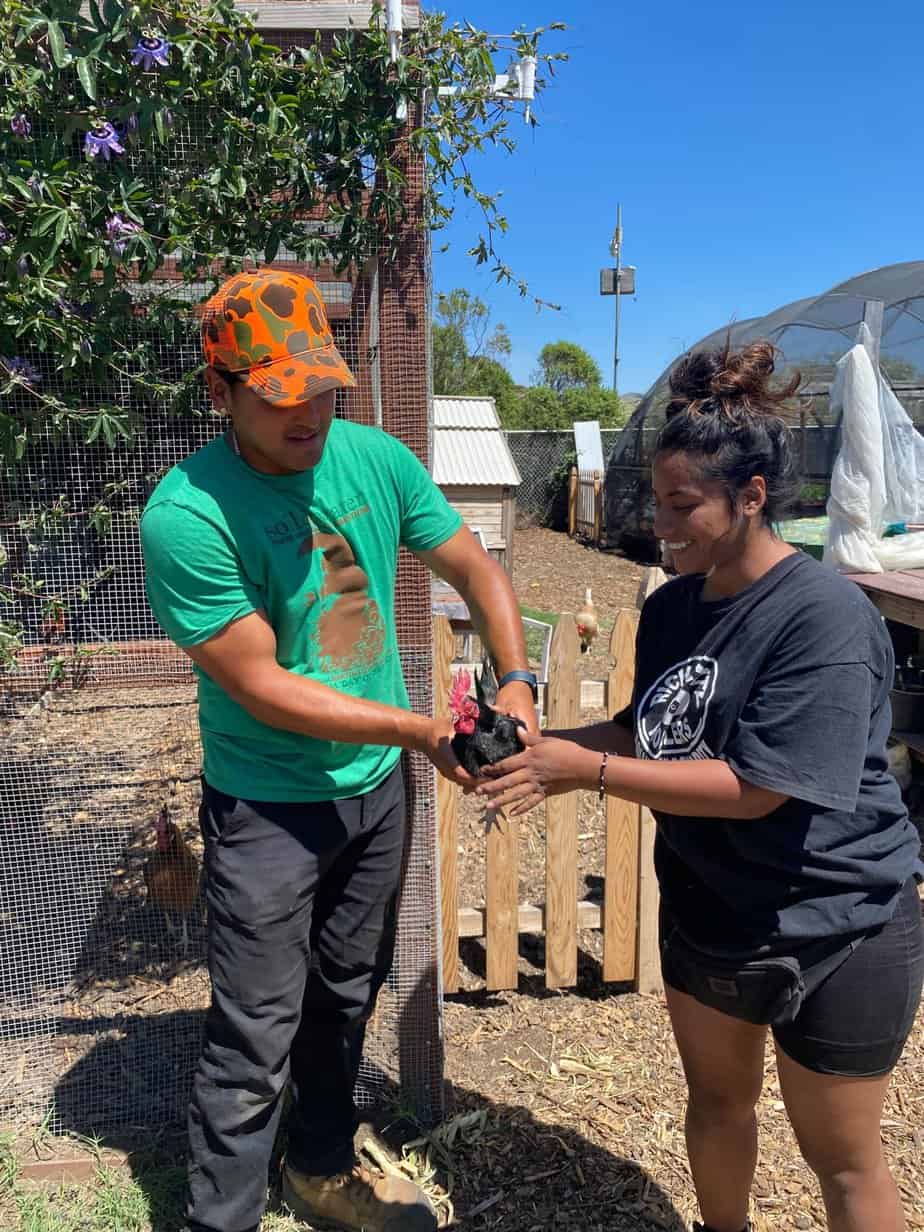
What is the process to
shape the next farm bill?
The process to shape the farm bill is complicated, which makes it hard for everyday people to participate.
Nevertheless, it is important that those whose lives are affected by the farm bill have the opportunity to shape it. For this reason, HEAL is dedicated to bridging the gap between those who are affected by the farm bill, and those who make the decisions.
If you are interested in getting involved, we are happy to break it down and make it easy for you!
Nevertheless, it is important that those whose lives are affected by the farm bill have the opportunity to shape it. For this reason, HEAL is dedicated to bridging the gap between those who are affected by the farm bill, and those who make the decisions.
If you are interested in getting involved, we are happy to break it down and make it easy for you!
There are five major stages to passing a new farm bill:
- Input: Anyone who wants to shape the farm bill (Organizers, farmers, advocates, activists, corporations, lobbyists, and others) tries to make their priorities known to members of congress. Generally, they prioritize members of congress that sit on agriculture committees of the House of Representatives and Senate. Some of the ways that people try to make their priorities known are through lobbying meetings, letters, petitions, press conferences, events, social media, media coverage, and hearings.
- Writing: The agriculture committees in the House and the Senate separately draft versions of the farm bill. After they are drafted, the House of Representatives debates and agrees upon the language for the House version of the farm bill, and the Senate debates and agrees upon language for the Senate version.
- Passing: Once the House and Senate bills have been passed, the leaders of the House and Senate come together to combine the bills into one bill. Once they develop a combined bill, the House and Senate vote on it. If both the House and Senate vote to approve the bill, the bill is sent to the White House for the President’s signature.
- Funding: While some of the farm bill’s programs are determined to be mandatory and are guaranteed to be funded, other programs are not automatically funded. These programs must be funded every year by congress through the House and Senate committees in charge of the budget. This is another opportunity for the public to shape the farm bill and push for funding to specific programs.
- Implementing: The US Department of Agriculture (USDA) is the government agency responsible for implementing the programs of the farm bill. Because the language outlining the programs in the farm bill is quite broad, the USDA is responsible for determining the details and rules of the programs. This is another opportunity for members of the public to shape pieces of the farm bill.
RESOURCES
Check out these amazing resources from our members and partners! Also, if you have any questions or want to get involved, email maleeka@healfoodalliance.org.
EXPLAINERS
La Semilla (2021): Food, Land, and Us: Farm Bill Zine (free online version)
La Semilla (2021): Food, Land, and Us: Farm Bill Zine (free online version)
NSAC 2018 Farm Bill Drilldown Blog Posts (2018):
VIDEOS
- La Semilla (2021): Virtual Release of Food, Land, and Us [1 hour, 43 min]
- RAFI-USA (2022): What is the Farm Bill, and Why Should I Care? [1 hour, 8 min]
- Food and Environment Reporting Network (2018): What is the farm bill and why does it matter? [7 min]
- NSAC (2018): What is the Farm Bill? [4 min]
- Wallace Center / Winrock International (2022): Farm Bill 101 with NSAC [1 hour, 10 min]
BOOKS
- Daniel Imhoff with Christina Badaracco (2019): The Farm Bill: A Citizen's Guide (for purchase)
PODCASTS
- Real Food Media (2019): The Farm Bill: Daniel Imhoff | Ep. 30
- Climate One (2022): Digging Deep into the Next Farm Bill, featuring Chuck Conner (National Council of Farmer Cooperatives), Scott Faber (EWG), Jonathan Coppess (University of Illinois) and John W. Boyd, Jr. (National Black Farmers Association)
NEWS ARTICLES & BLOGS
- Lisa Held (March 20, 2022): This Farm Bill Really Matters. We Explain Why. Civil Eats
- Nina Lakhani (September 27, 2022): US launches effort to end hunger by 2030 by expanding benefits and access to healthy foods, in The Guardian
- Chuck Abbott (August 17, 2022): Focus farm bill on small farmers, not corporate ag, says Land Stewardship Project, in Successful Farming
- Anthony Pahnke (October 13, 2022): Farm bill offers opportunity to challenge corporate control of the food system, The Hill
- Alison Winter (August 15, 2022): Farm bill season arrives: What’s the outlook for 2023? The Ottumwa CourierVanessa Garcia Polanco (October 17, 2022): Investing in next-gen farmers will create resilient food systems, Greenbiz
- Chuck Abbott (November 9, 2022): Fewer old hands on House ag panel to write new farm bill, Successful Farming
PRESENTATIONS
- Berkeley Food Institute: CAFOs and the Farm Bill (student presentation, 2018)
- Berkeley Food Institute: Crop Insurance and Biodiversity (student presentation, 2018)
RESOURCE COMPILATIONS
- Berkeley Food Institute Seminar on the Farm Bill (2018): Resources and Syllabus with assigned readings
- Farm Bill Law Enterprise (2022): 2023 Farm Bill Recommendations (See in particular their report on how the Farm Bill could better address labor issues)
POLICY LETTERS
RE: Prioritizing Recommendations for the 2023 Farm Bill (September 2023)
Protect Farmers and Foodchain Workers in the Farm Bill (June 2023)
RE: Recommendations for a thriving Farm Bill for us all (March 2023)
Protect Farmers and Foodchain Workers in the Farm Bill (June 2023)
RE: Recommendations for a thriving Farm Bill for us all (March 2023)
